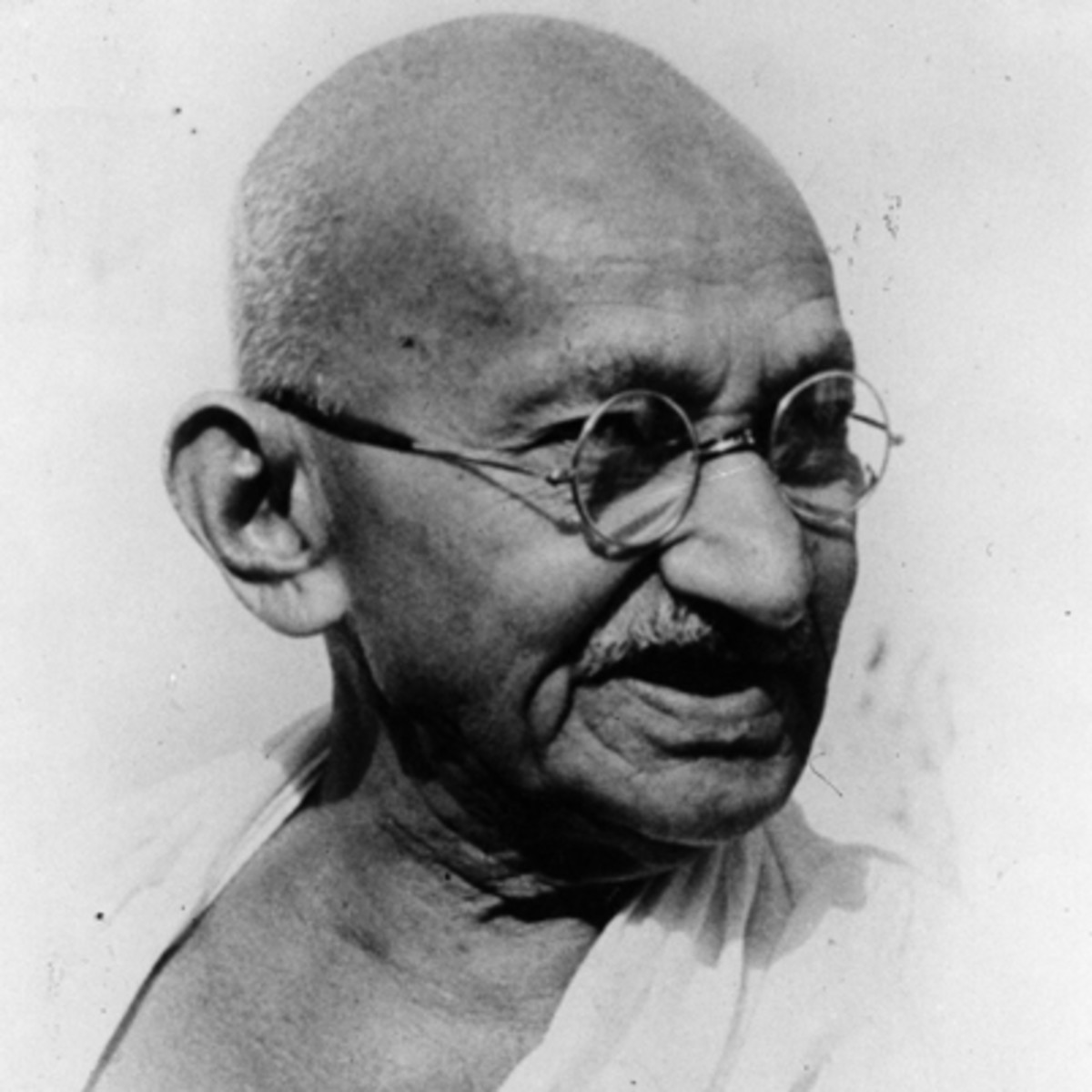
Mahatma Gandhi
Biography
Mahatma Gandhi (October 2, 1869 to January 30, 1948) was the leader of India’s non-violent independence movement against British rule and in South Africa who advocated for the civil rights of Indians. Born in Porbandar, India, Gandhi studied law and organized boycotts against British institutions in peaceful forms of civil disobedience. He was killed by a fanatic in 1948.
Early Life and Education
Young Gandhi was a shy, unremarkable student who was so timid that he slept with the lights on even as a teenager. In the ensuing years, the teenager rebelled by smoking, eating meat and stealing change from household servants.
Although Gandhi was interested in becoming a doctor, his father had hoped he would also become a government minister, so his family steered him to enter the legal profession. In 1888, 18-year-old Gandhi sailed for London, England, to study law. The young Indian struggled with the transition to Western culture.
Upon returning to India in 1891, Gandhi learned that his mother had died just weeks earlier. He struggled to gain his footing as a lawyer. In his first courtroom case, a nervous Gandhi blanked when the time came to cross-examine a witness. He immediately fled the courtroom after reimbursing his client for his legal fees.
Wife and Family
Mahatma Gandhi’s father, Karamchand Gandhi, served as a chief minister in Porbandar and other states in western India. His mother, Putlibai, was a deeply religious woman who fasted regularly.
At the age of 13, Mahatma Gandhi wed Kasturba Makanji, a merchant’s daughter, in an arranged marriage. In 1885, he endured the passing of his father and shortly after that the death of his young baby. In 1888, Gandhi’s wife gave birth to the first of four surviving sons. A second son was born in India 1893; Kasturba would give birth to two more sons while living in South Africa, one in 1897 and one in 1900.
Major Works
On completing his degree in Law, Gandhi returned to India, where he was soon sent to South Africa to practise law. In South Africa, Gandhi was struck by the level of racial discrimination and injustice often experienced by Indians. It was in South Africa that Gandhi first experimented with campaigns of civil disobedience and protest; he called his non-violent protests satyagraha. Despite being imprisoned for short periods of time, he also supported the British under certain conditions. He was decorated by the British for his efforts during the Boer War and Zulu rebellion.
After 21 years in South Africa, Gandhi returned to India in 1915. He became the leader of the Indian nationalist movement campaigning for home rule or Swaraj.
Gandhi successfully instigated a series of non-violent protest. This included national strikes for one or two days. The British sought to ban opposition, but the nature of non-violent protest and strikes made it difficult to counter.
Gandhi also encouraged his followers to practise inner discipline to get ready for independence. Gandhi said the Indians had to prove they were deserving of independence. This is in contrast to independence leaders such as Aurobindo Ghose, who argued that Indian independence was not about whether India would offer better or worse government, but that it was the right for India to have self-government.
In 1930, Gandhi led a famous march to the sea in protest at the new Salt Acts. In the sea, they made their own salt, in violation of British regulations. Many hundreds were arrested and Indian jails were full of Indian independence followers.
The inspiring life of Mahatma Gandhi came to an end on 30th January 1948, when he was shot by a fanatic, Nathuram Godse, at point-blank range. Nathuram was a Hindu radical, who held Gandhi responsible for weakening India by ensuring the partition payment to Pakistan. Godse and his co-conspirator, Narayan Apte, were later tried and convicted. They were executed on 15th November 1949.
